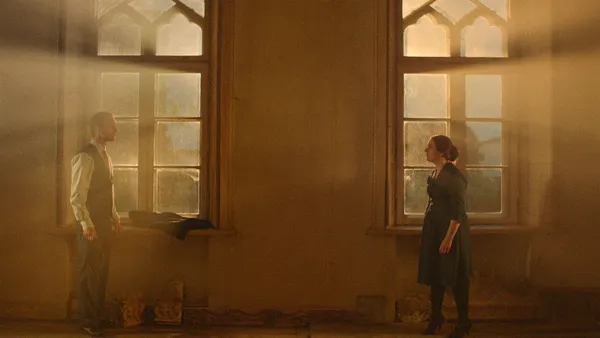 |
| Frederik von Lüttichau and Luisa Taraz in Dawn Breaks Behind The Eyes |
In director Kevin Kopacka’s genre-bending and playful horror, Dawn Breaks Behind The Eyes, Margo (Luisa Taraz) and her ill-tempered husband Dieter (Frederik von Lüttichau) find themselves inspecting a castle in the middle of nowhere – as you do. Bequeathed to the wife, who is cursed with an ill-tempered husband, the pair find themselves trapped in its walls, seemingly for eternity. From there, Kopacka weaves together layers of storytelling, as he explores the dynamics of their relationship, and through them the conflict of masculinity and femininity.
In conversation with Eye For Film, Kopacka discussed his creative process, possibly departing filmmaking as an act of metamorphosis, and confronting a personal fear.
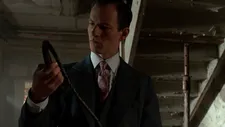 |
| Getting ideas in Dawn Breaks Behind The Eyes |
Paul Risker: Thinking about your background in painting, how does this feed into your filmmaking, and how do the two inform one another?
Kevin Kopacka: I'm a studied painter and I always like the idea that a painting can capture an atmosphere, or an aura. This definitely relates to the way I make films.
Often the way I paint, I try to communicate with people's subconscious. For example, if I were to do a painting of werewolves that tells a story, I would paint over it with many layers so that it turns into this abstract painting. I'm always interested if people see the abstract painting, do they subconsciously realise what is underneath it? Is it painted to look like a nice painting, but there’s something grotesque underneath? I've always wanted to try working with the subconscious in film - if you put a layer over something and you don't see it, but it's there, would that make a difference on the perception?
… Studying art, I learned how different colours interact and how they can convey different emotions. So that's why I had to teach myself how to do colour grading for my films, so I can use this painterly quality with the film, and can control the image in this way.
PR: The way in which we interact with a painting and a film is different. You can stand and study a painting, whereas a film, you hope the audience rewatch it to study it closer, and see what may have been missed or misunderstood first time around.
KK: One difference is when you look at a painting you don't think you have to understand it, whereas with a film, everyone has the expectation that when you watch it, you’ll understand it. And if it doesn't work, then it's a bad film.
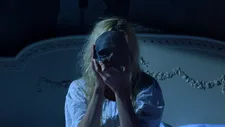 |
| Uncertain identity |
I like the idea of making films that you have to rewatch many times, because there are lots of puzzles, mysteries and layers. The layers I use for films are layers of differing realities. These work at the same time, and tell the same stories from a different angle. It’s why with Dawn Breaks Behind The Eyes, the more often you watch it, the more you'll be able to grasp and notice different things. It's for a type of audience that likes to explore films.
PR: What was the initial seed of the idea for the film, and are you the type of writer that writes through words, images, or ideas?
KK: There were a few different aspects that made the story come forth. In my case it always starts with atmosphere. I have an image in my head, or in terms of a painting, I have an atmosphere and I try to build around that. The atmosphere in this case was a couple who spend eternity in a castle, and how the relationship dynamic changes throughout eternity because there's no end point.
The other aspect I found interesting was when I was a kid and I’d watch movies 20 times, I always used to hope that something would change. It’s similar to life, in that you keep making the same mistakes until you learn from it, and you're able to break the cycle. I like this idea of being trapped. There's different variations on the idea, and in this movie they're trapped in a castle, they're trapped in time, they're trapped in the medium.
There's a monologue where one of the characters talks about watching a painting. She says, “Do the people in the painting realise that they're stuck in this moment? Do they have a million thoughts, or do they just have this one thought that occurred at the moment the painting was finished?”
These are the aspects I found interesting when writing the film, then it organically evolved into something. The end result was different to the initial concept, but that’s the way I like the film – it metamorphosed into something else.
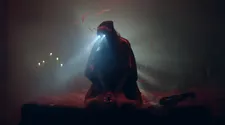 |
| The party takes a strange direction in Dawn Breaks Behind The Eyes |
PR: Filmmakers have spoken to me about how you have to listen to a story. I interpret this as surrendering control as the author or creator, and compromising.
KK: It's probably different for every filmmaker, because some people prefer, even with painting, to know exactly what the painting is going to look like before they start. I was like that initially, but at some point I became more interested in the process, and that's why I'm open to collaborations with the cast and crew.
Even the editing process itself was something where most of the aspects were changed from the script, because I found it didn't work quite as I’d hoped.
It was a long editing process with some interruptions in-between, that made this into something more interesting that I'd never have thought of writing. What I like about the film is that it has this abstract quality because it wasn't written that way - instead it evolved.
This has been the process for most of my films so far. It's a very interesting process, but it's also a frustrating and long process because it takes a lot of time to breathe.
I wrote the script for Dawn Breaks Behind The Eyes in 2017 and since then I’ve more experience in the writing process. I'm currently writing my next film and it’ll likely be the case that I’ll shoot and edit it the way it's intended. So far the editing process has been a big creative process in itself, that changed everything.
PR: When you say the film became something different to what you wrote, was the genre mashup discovered in the edit?
KK: This was part of the original script. The initial cut of the film was two hours and 20 mins, compared to the 74 minute final cut. It was mostly taking elements away than adding things. I always intended it to be this genre mashup of all the elements I like, and I'd want to see in a film like this.
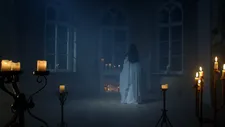 |
| Darkness falls in Dawn Breaks Behind The Eyes |
PR: Making something that's a nod to your influences, there's the danger of imitation rather than putting them through your own filter. How do you guard against this?
KK: In this case, I was never afraid that it would seem that it was copying things. This was mainly because I wasn’t intentionally, and I have a different way of how I approach stories. Even if the elements themselves are familiar, the context of the story changes in itself. That's why I feel the films I make might have an individual way of telling narratives, that hopefully makes it more original than just copying elements of the films I like.
PR: The supernatural flickers throughout your work. Where does this interest come from?
KK: I was always a big fan of horror films since I can remember. At some point when I was a teenager, I was interested in the paranormal, supposedly those things happening in real life. It led me to discover and become interested in metaphysics, and I liked how it’s the opposite of horror. It’s something very pristine and beautiful, and I like putting them into juxtaposition to one another, and that's why a lot of my films deal with the idea of eternity. I believe in it, but it freaks me out. I use my films as a way to work through the issue of dealing with the idea there could be eternity after death.
PR: What freaks you out about the idea of eternity?
KK: The idea that there's no end to it and you could keep on existing and experiencing forever. Of course, my perspective of the time I'd have on earth, a linear time, would be different to the experience of time after death.
Dawn Breaks Behind The Eyes is available on Digital now, courtesy of Dark Sky Films.





















